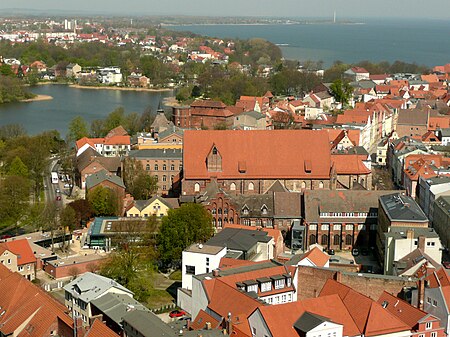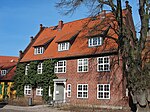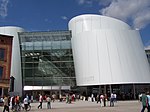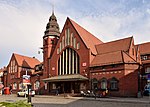German Oceanographic Museum

The German Oceanographic Museum (German: Deutsche Meeresmuseum), also called the Museum for Oceanography and Fisheries, Aquarium (German: Museum für Meereskunde und Fischerei, Aquarium), in the Hanseatic town of Stralsund, is a museum in which maritime and oceanographic exhibitions are displayed. It is the most visited museum in North Germany. In addition to the main museum building, the actual Oceanographic Museum, there are three other sites, the Ozeaneum, opened in July 2008, the Nautineum and the Natureum. The main house is located in the hall of the former St. Catherine's Church. The Oceanographic Museum has many exhibitions with information on fishing, the environment and marine conservation, on marine and ocean research, flora and fauna of the Baltic Sea region, and, just under 50 aquaria contain more than 600 living sea creatures, including giant tortoises and Polynesian fish. In the Ozeaneum, which opened on 11 July 2008 on Stralsund's harbour island, there are 39 large aquaria with 7,000 animals from the Baltic Sea, North Sea and Atlantic Ocean, as well as the world's largest exhibition of whales. The Nautineum on the island of Dänholm has exhibitions on the topics of fishing, marine research, whale research, hydrography and sea routes. The focal point of the Natureum on the Darß peninsula is nature and the landscape of the peninsula.
Excerpt from the Wikipedia article German Oceanographic Museum (License: CC BY-SA 3.0, Authors, Images).German Oceanographic Museum
Bielkenhagen,
Geographical coordinates (GPS) Address Nearby Places Show on map
Geographical coordinates (GPS)
| Latitude | Longitude |
|---|---|
| N 54.3126 ° | E 13.087080555556 ° |
Address
Bielkenhagen 10
18439 , Altstadt
Mecklenburg-Vorpommern, Germany
Open on Google Maps










